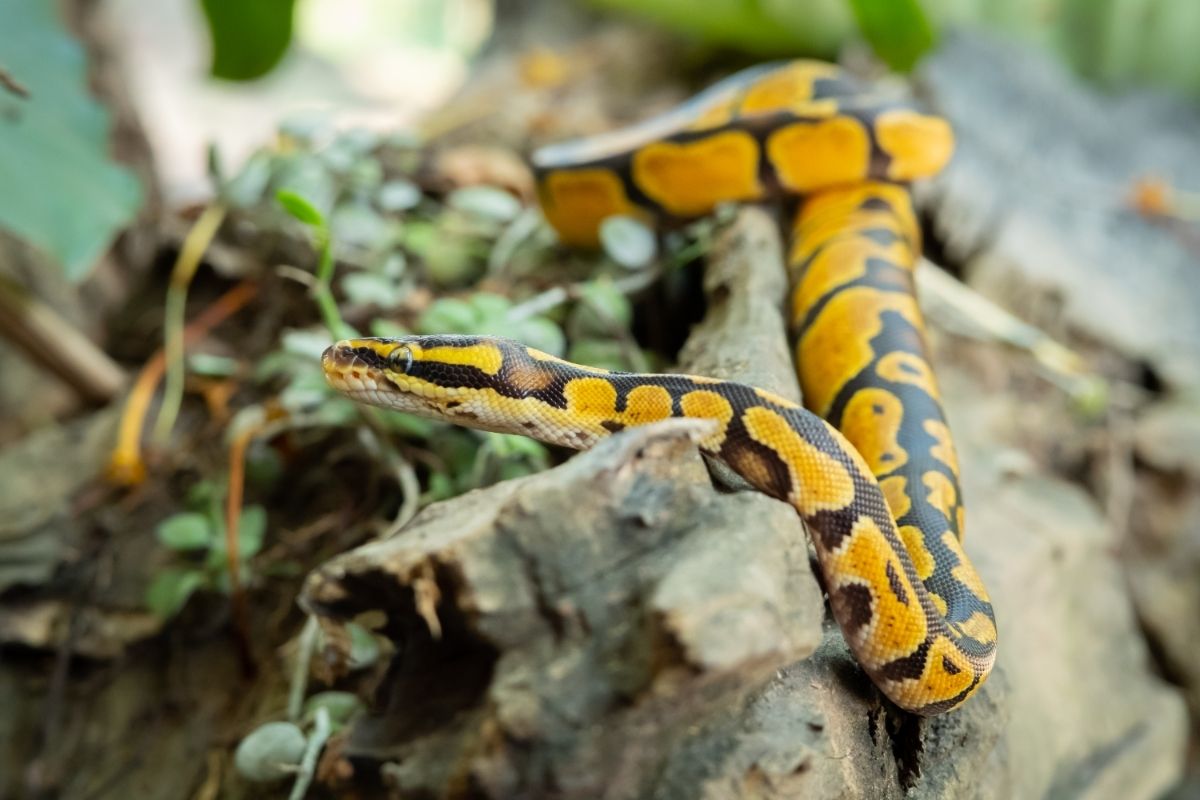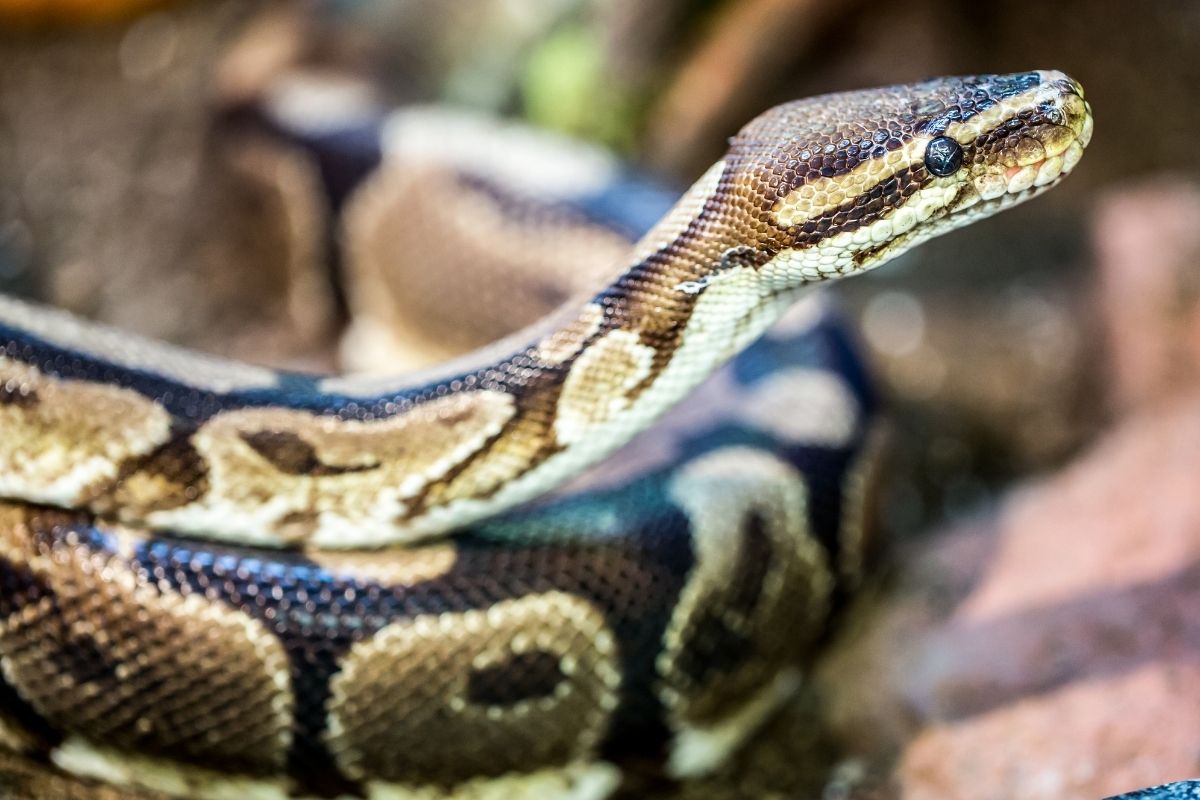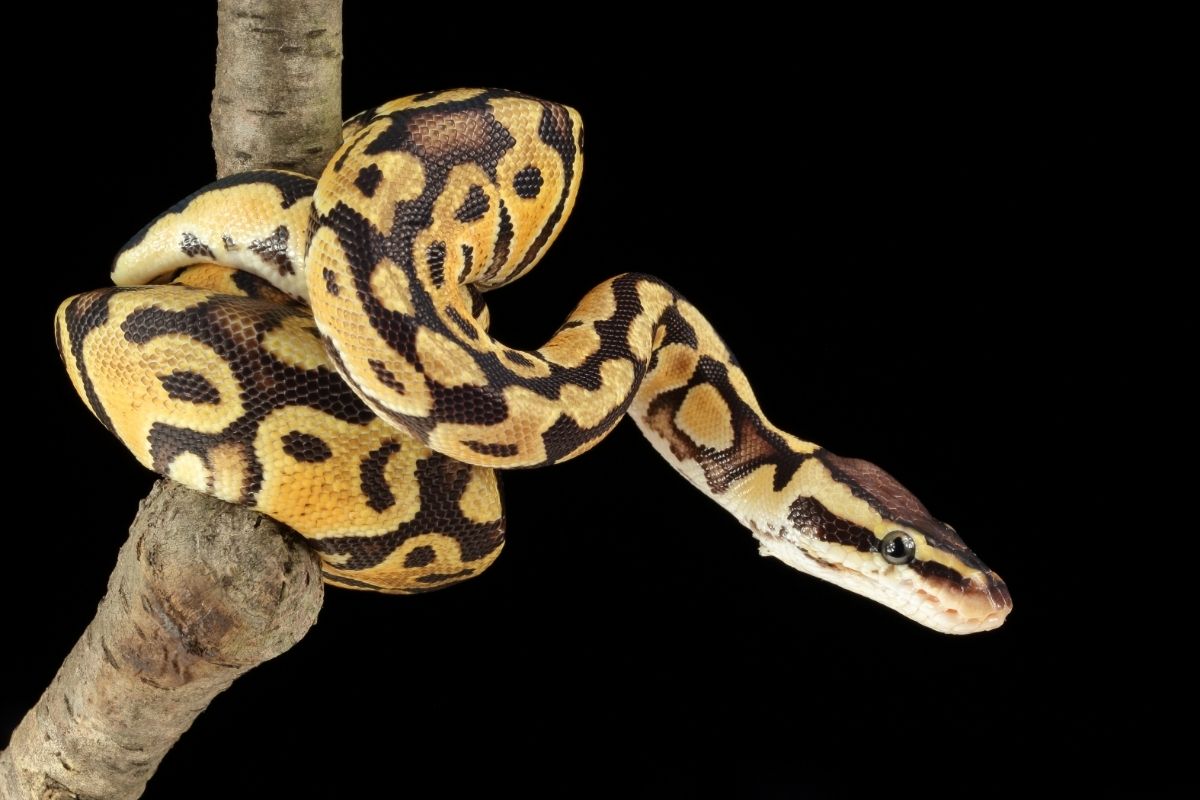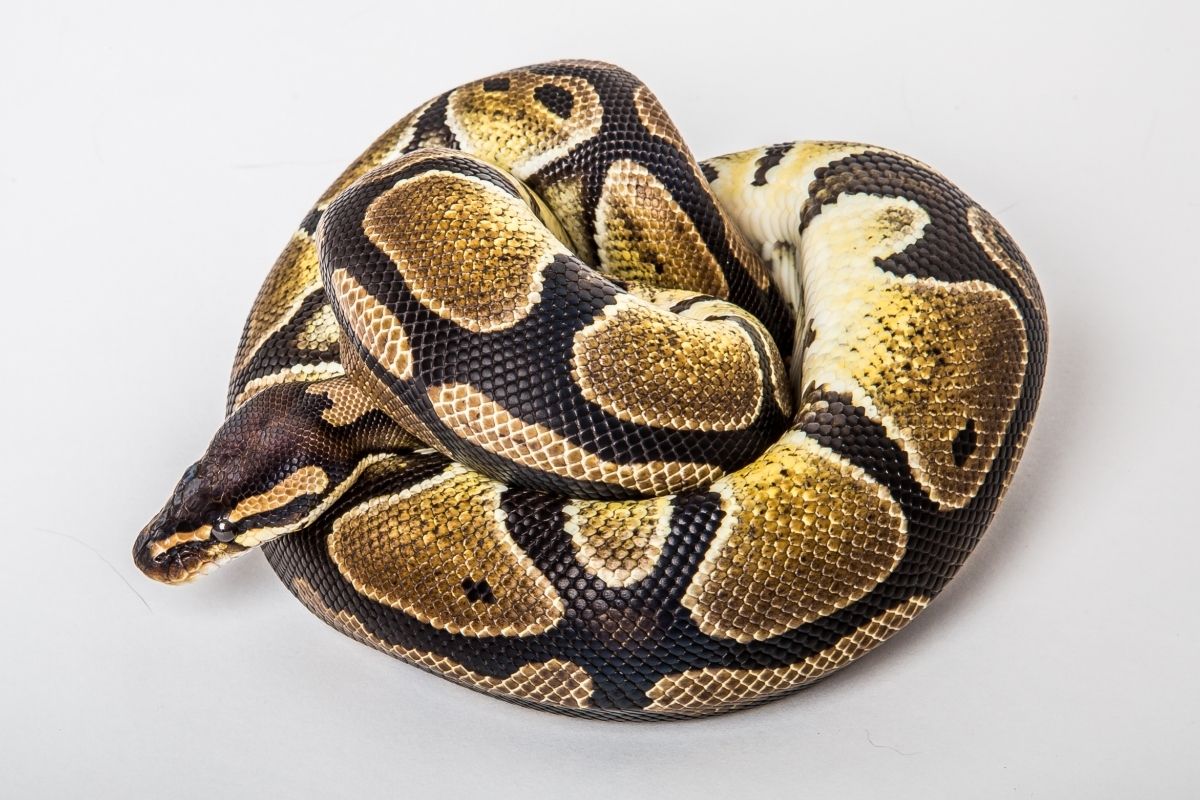Have you considered purchasing a bumblebee ball python morph and want to know more? Perhaps you’ve seen some pictures of these beautiful snakes and are interested in finding out more?
Or maybe you have a bumblebee and want to find out all you can about it? Whatever the reason is that brought you here today, we have the answers for you!
These popular snakes are known for their unique yellow and black colors, giving them their name of bumblebee.

Not only are their colors part of the appeal, but they are also extremely calm, making them fantastic pet snakes!
But what else is there to know about these snakes? It can be tricky to find information, especially as there are so many varieties of Ball Pythons out there. We can quickly find ourselves overwhelmed and unsure where to turn.
Well, no more! Today we are here with the answers you need. Keep reading to find out all you need to know about bumblebee ball python morphs, and check out some wonderful pictures of these beautiful snakes.
Discovery Of Bumblebee Ball Python Morph
One of the first things we can find ourselves wondering about is how these snakes were discovered. Well, it was quite a recent discovery!
It wasn’t until other morph breeds became popular that the bumblebee ball python morphs were discovered!
This morph is considered a designer morph, and it was discovered in the mid-2000s, with many breeders believing it was between 2004 and 2006 that this breed was discovered.
Now that we had established when this new breed was discovered let’s move on and learn more about these interesting snakes!
Genetics Of Bumblebee Ball Python Morph
Like we said earlier, the bumblebee ball python morph isn’t an original or dominant variety. These designer snakes have traits from a range of morphs, giving them a different genetic makeup from other snakes.
First off, we have the dominant genetic, the spider ball python morph. This is where you get most of the genes from. Then we have two co-dominant morphs that make up the rest of the snake. These are pastel and enchi.
So if you wanted a bumblebee morph, you would need to breed a pastel and spider morph.
You could breed an enchi and spider too, but this creates a stinger bee morph instead of a bumblebee, which will have some small and subtle differences.
Health Issues Of Bumblebee Ball Python Morphs
It’s always worth researching and considering the health issues that your snake could have, and bumblebee pythons are no different! They have some health issues, with the main being head wobble.
Wobble is a common health issue we see in Spider morphs, and it can be passed to the bumblebee morphs too.
It is worth noting, though, that the head wobble won’t be as prevalent in bumblebees as other morphs, but be sure to ask the breeder if any of their snakes have had this issue before!
How Much Do Bumblebee Ball Python Morphs Cost?

You can purchase a bumblebee ball python morph at a reasonable price. On average, most of these snakes will sell for between 200 and 300 dollars, depending on the breeder that you purchase them from.
This price range makes it a fine choice for those on a budget. However, it’s worth noting that some of these ‘designer’ bumblebees can cost up to one thousand dollars! That’s quite a price difference, isn’t it?
Where Can I Buy A Bumblebee Ball?
So, where can you purchase one of these snakes? Well, as it’s a pretty common morph, you can probably pick one up at your local pet store!
You can also find them for sale on online sites like Craigslist or Facebook marketplace.
You might even find them with your local breeder. It’s worth searching for these online to see what you can find.
Most local reptile expos will also have Bumblebee morphs that you can purchase.
Often, though, people tend to buy these snakes online or with their local breeder. A lot of the listings you find online will be from small local breeders.
We do recommend doing your research beforehand to ensure that you are purchasing the snake from a reputable breeder to avoid any health complications or supporting dodgy or illegal breeding.
Pictures Of Bumblebee Ball Python Morph

Before you go, check out some pictures of these beautiful snakes below!
First up, we have this beautiful snake curled up around a branch. You can see its yellow base and black markings, although it is a little more distorted than we usually see on these snakes.
It just goes to show how unique all of these snakes can be!
This snake has a far lighter base color, as we can see in the image. There also seems to be a lot of yellow color and fewer black markings than other bumblebee snakes, but it’s still beautiful.
Finally, we have this adorable snake curled up into a ball. It’s no wonder that these snakes are referred to as ball pythons. Here we can see a lovely yellow base color and black stripes and dots that give it the classic bumblebee look.

Final Thoughts
And there you have it, all you need to know about these wonderful snakes.
While they are a fairly new morph, bumblebee ball python morphs are becoming increasingly popular.
You can expect to see these reasonably priced and docile snakes that are sure to make a wonderful pet.
Before you go today, be sure to check out our brief FAQ section to find out even more about these wonderful snakes!
Frequently Asked Questions
Get your last-minute questions answered below!
Do Bumblebee Ball Pythons Wobble?
As we mentioned earlier, these morphs can wobble. This wobble will look like a head tremor, or their head will tilt to the side, sometimes by as much as 90 degrees.
The severity can vary from snake to snake, so be sure to keep an eye on them and consult a vet where necessary.
Are Bumblebee Ball Python Morphs Easy To Care For?
Yes, these snakes are fairly easy to care for! Like with other morphs, you need to ensure that their heating and humidity levels are correct to ensure they are well cared for.
You will also need to ensure that you feed them correctly, every week to start with and then every one to two weeks once they are adults. You will also need to ensure that you don’t handle them a day after feeding.
